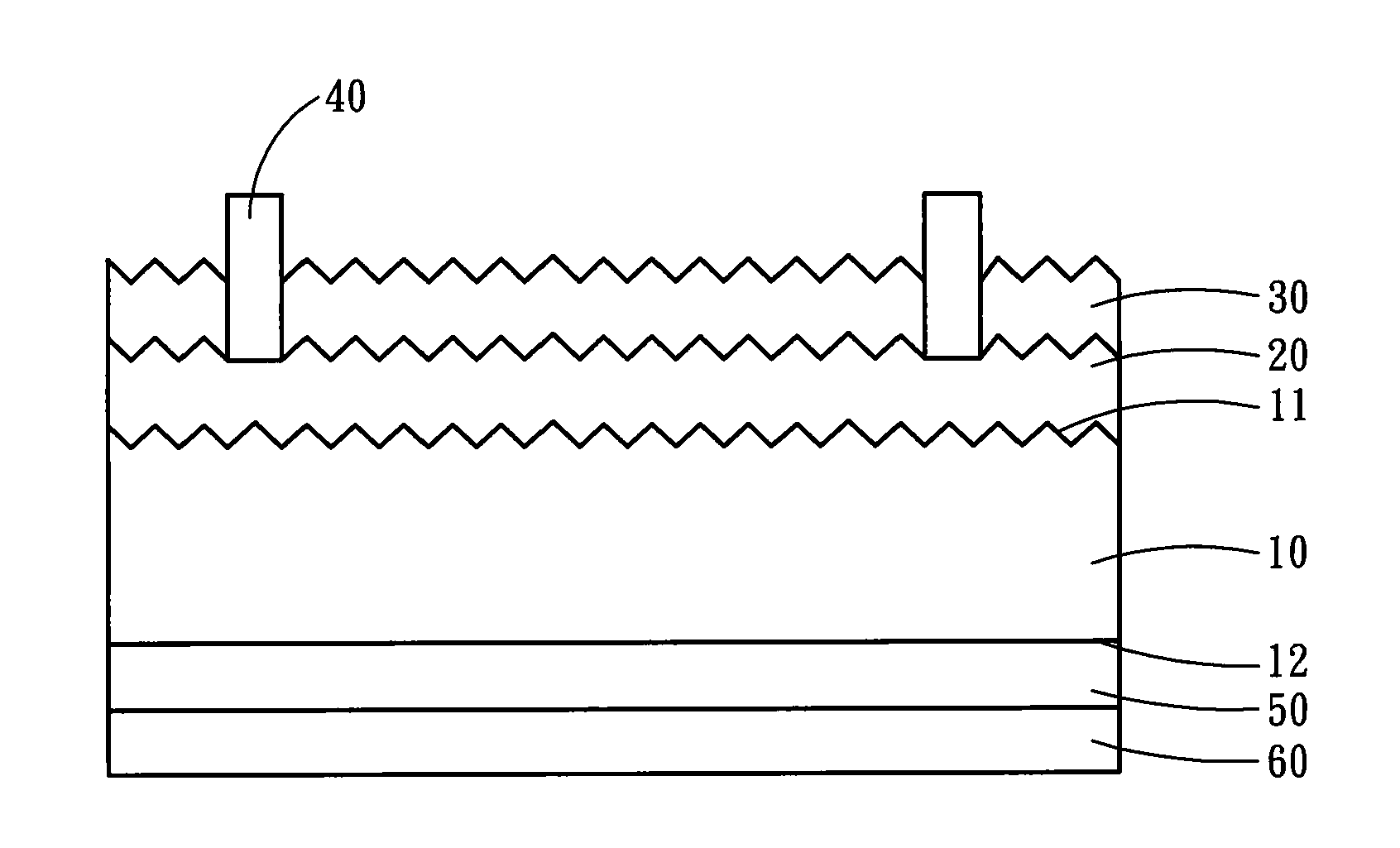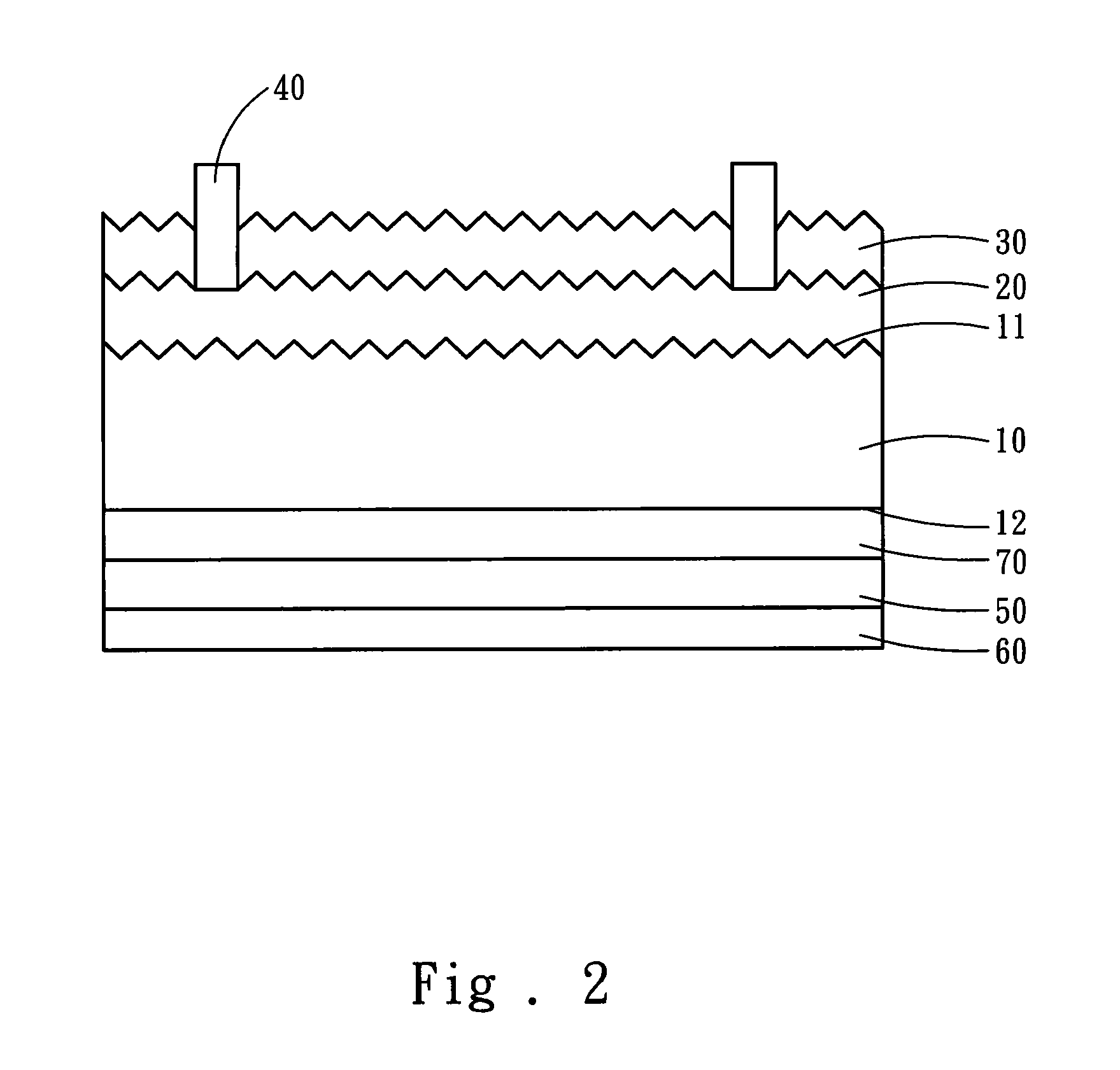Solar cell integrating monocrystalline silicon and silicon-germanium film
a solar cell and monocrystalline silicon technology, applied in the field of solar cells, can solve the problems of increasing the sunlight absorption range, amorphous-silicon solar cells are problematic in absorbing sunlight energy, etc., and achieve the effects of reducing the cost of solar cells, increasing the capacity of capturing sunlight, and promoting solar cell energy conversion efficiency
- Summary
- Abstract
- Description
- Claims
- Application Information
AI Technical Summary
Benefits of technology
Problems solved by technology
Method used
Image
Examples
Embodiment Construction
[0012]The technical contents of the present invention are described in detail with the embodiments. However, it should be understood that the embodiments are only to exemplify the present invention but not to limit the scope of the present invention.
[0013]Refer to FIG. 1 a diagram schematically showing the structure of a solar cell integrating monocrystalline silicon and a SiGe film according to one embodiment of the present invention. The solar cell integrating monocrystalline silicon and the SiGe film of the present invention comprises a P-type monocrystalline silicon substrate 10, an N-type amorphous SiGe film 20, a transparent conductive layer 30, a plurality of metal electrodes 40, a back surface field 50, and a backside metal electrode layer 60. The P-type monocrystalline silicon substrate 10 has an upper surface 11 and a lower surface 12. The N-type amorphous SiGe film 20 is formed on the upper surface 11 of the P-type monocrystalline silicon substrate 10 and has a thickness ...
PUM
| Property | Measurement | Unit |
|---|---|---|
| thickness | aaaaa | aaaaa |
| thickness | aaaaa | aaaaa |
| wavelengths | aaaaa | aaaaa |
Abstract
Description
Claims
Application Information
 Login to View More
Login to View More - R&D
- Intellectual Property
- Life Sciences
- Materials
- Tech Scout
- Unparalleled Data Quality
- Higher Quality Content
- 60% Fewer Hallucinations
Browse by: Latest US Patents, China's latest patents, Technical Efficacy Thesaurus, Application Domain, Technology Topic, Popular Technical Reports.
© 2025 PatSnap. All rights reserved.Legal|Privacy policy|Modern Slavery Act Transparency Statement|Sitemap|About US| Contact US: help@patsnap.com



